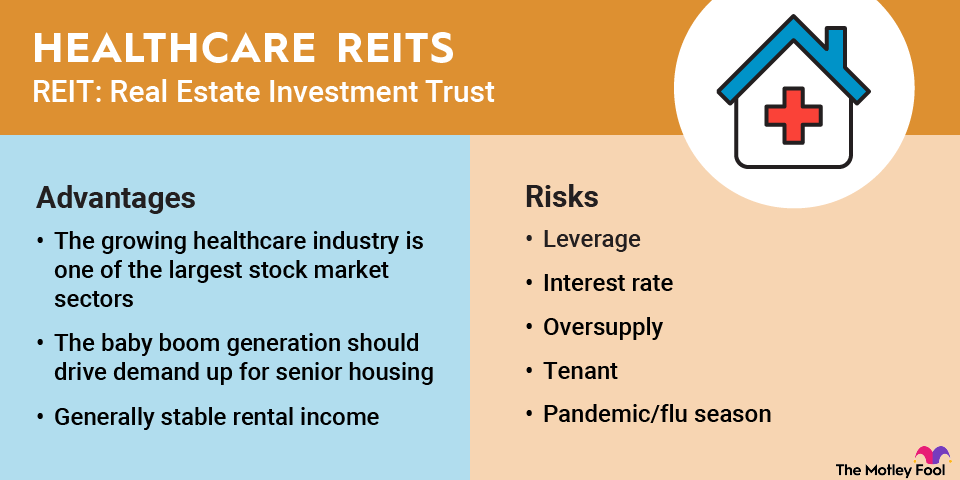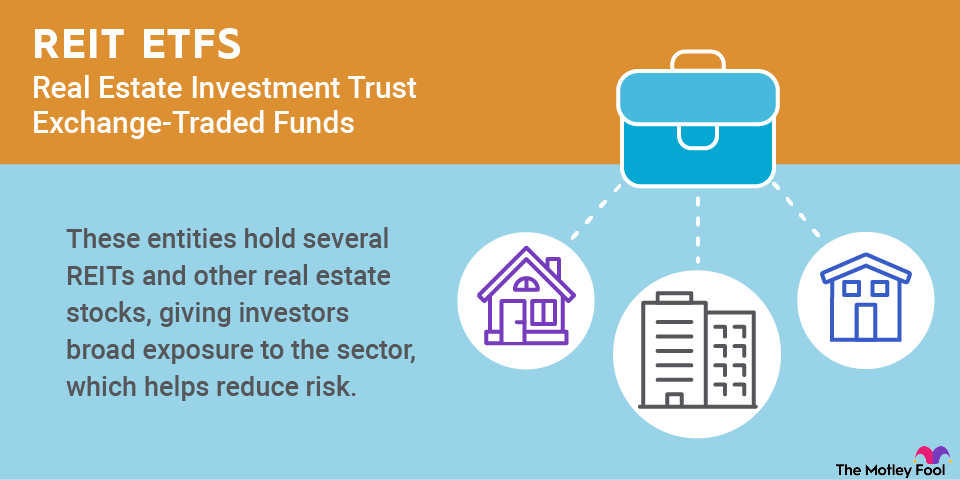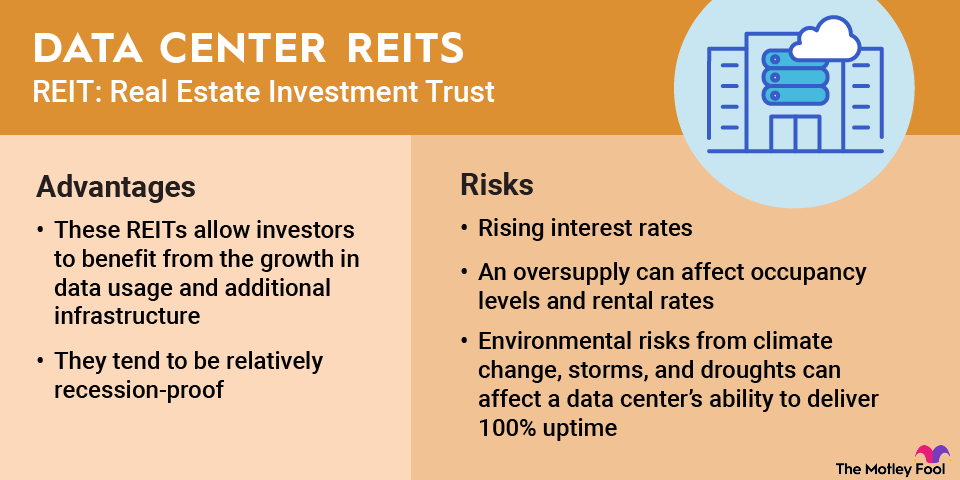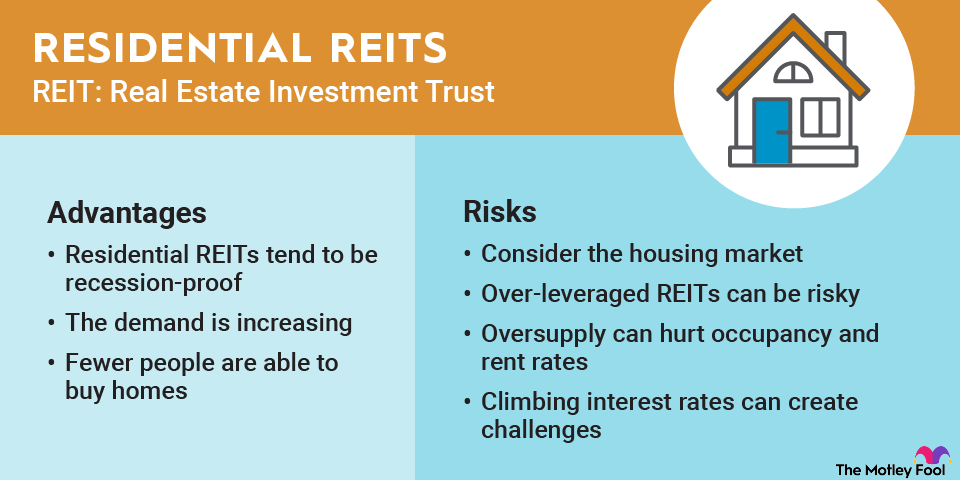Real estate investment trusts (REITs) play a vital role in the healthcare industry. Healthcare REITs operate many of the specialized facilities that healthcare systems and other health-related institutions need to deliver the best care for patients.
Here's a closer look at healthcare REITs. We'll consider whether these REITs are good investments and explore some attractive healthcare REIT options that investors should consider.

Understanding healthcare REITs
Healthcare REITs own, operate, manage, acquire, and develop healthcare-related real estate. These facilities include senior living communities, hospitals, medical offices, outpatient facilities, life science innovation and research properties, and skilled nursing facilities.
Most healthcare REITs make money by leasing space in their facilities to tenants, such as healthcare systems, primarily under triple-net leases. This lease structure requires the tenant to cover maintenance, real estate taxes, and building insurance. The structure provides REITs with a very predictable stream of rental income, making them ideal stocks to invest in during a recession.
Some healthcare REITs also operate the facilities they own, such as senior living communities. They typically hire a third-party manager who earns a fee for managing the property's day-to-day operations. The REIT generates net operating income (NOI) from the fees paid on behalf of patients for their housing and any services provided. The income can vary due to fluctuations in occupancy levels and rates.

Advantages of investing in healthcare REITs
Healthcare REITs benefit from several notable catalysts, including:
- A massive and growing industry: Healthcare is one of the largest stock market sectors. Healthcare spending in the U.S. is on track to reach a staggering $6.8 trillion by 2030, up from $4.9 trillion in 2023.
- Demographics: The aging of the Baby Boomer generation is a major driver of rising healthcare real estate demand. The U.S. population of people aged 80 years or older is on track to hit 18 million by 2030, representing a 30% increase from the current level. As a result, companies will need to build more senior housing properties, skilled nursing facilities, and other related real estate to support the aging population.
- Generally stable income: Most mealthcare properties produce stable rental income backed by long-term leases.
Risks of investing in healthcare REITs
While healthcare REITs are less risky than other healthcare stocks due to their generally stable rental income, they're not without risk. Here are some of the risks they face:
- Leverage risk: REITs borrow heavily to acquire and develop real estate. The debt reduces their financial flexibility during economic recessions.
- Interest rate risk: REITs are highly sensitive to changes in interest rates. Higher rates increase their cost of debt, given the sector's use of leverage. In addition, higher interest rates give income-focused investors more investment options, such as government and corporate bonds, that offer an attractive income yield, which can weigh on REIT stock prices.
- Oversupply risk: Healthcare REITs must align their development plans with demand. Given the highly specialized nature of most healthcare facilities, REITs need to be careful not to build too much, as excess supply may sit vacant.
- Tenant risk: Healthcare REITs rely on their tenants to pay rent and effectively manage senior living facilities. However, healthcare margins are relatively thin, which can cause operators to run into financial trouble if they're not vigilant. That can affect rental receipts and force a healthcare REIT to find a new tenant for their facility if an operator can't meet its financial obligations.
- Pandemic/flu season risk: Virus outbreaks can significantly affect healthcare REITs, especially those focused on senior housing. It can cause occupancy to decline as more patients check out than are admitted.
Five healthcare REITs to consider in 2025
According to the National Association of Real Estate Investment Trusts (NAREIT), 18 publicly traded REITs focused on healthcare-related real estate as of late 2025. That gives investors interested in the sector multiple options. A few stand out for their strong growth potential, including:
| Name and ticker | Market cap | Dividend yield |
|---|---|---|
| Alexandria Real Estate Equities (NYSE:ARE) | $7.9 billion | 11.59% |
| Welltower (NYSE:WELL) | $127.0 billion | 1.52% |
| Healthpeak Properties (NYSE:DOC) | $11.6 billion | 6.70% |
| Ventas (NYSE:VTR) | $36.3 billion | 2.45% |
| Medical Properties Trust (NYSE:MPW) | $3.1 billion | 7.99% |
Here's a closer look at these top-performing healthcare REITs.
1. Alexandria Real Estate Equities

NYSE: ARE
Key Data Points
2. Welltower

NYSE: WELL
Key Data Points
Welltower (WELL -3.19%) is the world's preeminent residential wellness and healthcare infrastructure company. The REIT owns a portfolio of more than 1,500 senior and wellness housing communities across the U.S., U.K., and Canada. It also invests in outpatient medical buildings (more than 26 million square feet) to support physicians.
The healthcare REIT invests heavily in expanding its portfolio. Through mid-year, the company had announced $9.2 billion of investment activity. Notable investments included paying 4.6 billion Canadian dollars ($3.3 billion at the exchange rate in mid-2025) for a portfolio of 38 ultra-luxury senior housing communities and nine entitled development parcels in Canada. It also bought NorthStar Healthcare Income in a $900 million deal for its diversified portfolio of U.S. senior housing properties.
Welltower's heavy investments are growing its earnings, which are now supporting dividend growth. The REIT hiked its dividend payment by 10.4% in mid-2025, its second consecutive double-digit annual dividend increase.
3. Healthpeak Properties

NYSE: DOC
Key Data Points

NYSE: VTR
Key Data Points

NYSE: MPW
Key Data Points
Medical Properties Trust (MPW -5.35%) focuses on owning hospitals secured by NNN leases. In late 2025, it owned almost 400 properties across nine countries, leased to more than 50 tenants.
The medical REIT has struggled in recent years due to tenant issues and higher interest rates. Its top two tenants went bankrupt. The loss affected the REIT's rental income and its ability to refinance debt as it matured. However, it has replaced those tenants with financially stronger ones. As a result, the REIT expects to collect more than $1 billion in annual cash rent by the end of 2026 as new tenants ramp up their rental rates.
Additionally, Medical Properties Trust has sold assets and started refinancing debt, putting its balance sheet on a much firmer foundation. The improvements position the REIT to grow shareholder value in the coming years as its recovery takes hold.
Related investing topics
A unique way to invest in the healthcare sector
Healthcare REITs will be one of the beneficiaries of the healthcare sector's continued growth. These companies should continue raising rents while experiencing healthy occupancy levels as Baby Boomers age, making it an excellent sector for investors to consider.

















